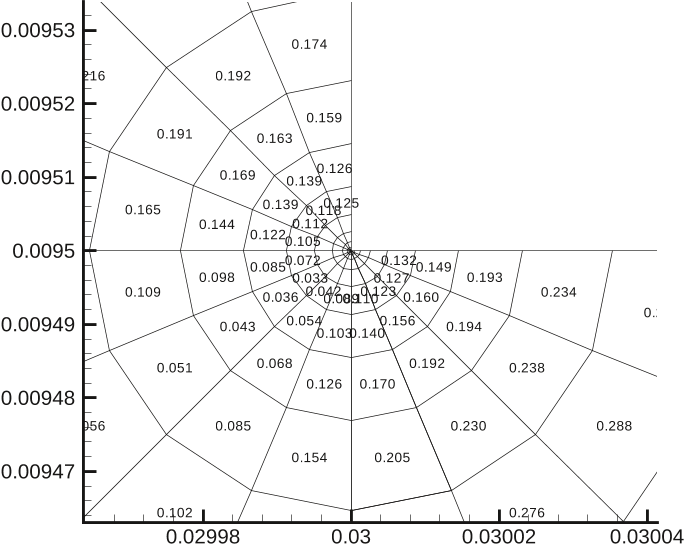Q1. What are the contributions in "Precise fem solution of corner singularity using adjusted mesh applied to 2d flow" ?
The authors present an alternative approach to the adaptive mesh refinement. For steady Navier-Stokes equations the authors proved in [ 1 ] that for nonconvex internal angles the velocities near the corners possess an expansion u ( ρ, θ ) = ρφ ( θ ) +... ( + smoother terms ), where ρ, θ are local spherical coordinates. The authors show an example of 2D mesh with quadratic polynomials for velocity.





